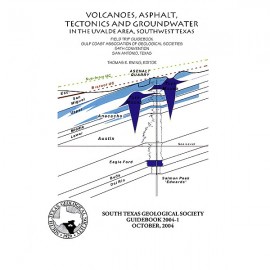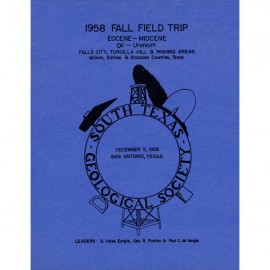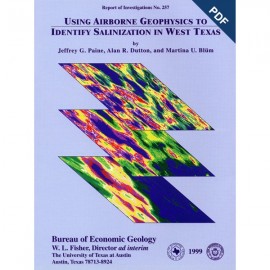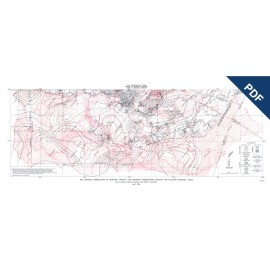Reports of Investigations
-
Books & Reports
- Reports of Investigations
- Guidebooks
- Udden Series
- Geological Circulars
- Down To Earth
- Atlases of Major Oil and Gas Reservoirs
- Texas Memorial Museum Publications
- Environmental Geologic Atlas of the Texas Coastal Zone
- Mineral Resource Circulars
- Other Reports
- Seminars and Workshops
- Handbooks
- Submerged Lands of Texas
- Symposia
- Annual Reports
- Open File Reports
-
Maps & Cross Sections
- Thematic Maps
- Miscellaneous Maps, Charts & Sections
- Geologic Atlas of Texas
- STATEMAP Project Maps
- Geologic Quadrangle Maps
- Cross Sections
- Highway Geology Map
- Energy and Mineral Resource Maps
- Shoreline Change and Other Posters
- Wilcox Group, East Texas, Geological / Hydrological Folios
- Bouguer Gravity Atlas of Texas
- River Basin Regional Studies
- Featured Maps
- Posters
- Teachers & the Public
-
Geological Society Publications
- Gulf Coast Association of Geological Societies
- Alabama Geological Society
- Austin Geological Society
- Corpus Christi Geological Society
- Houston Geological Society
- Lafayette Geological Society
- Mississippi Geological Society
- New Orleans Geological Society
- South Texas Geological Society
- GCS SEPM Publications
- Historic BEG & UT Series
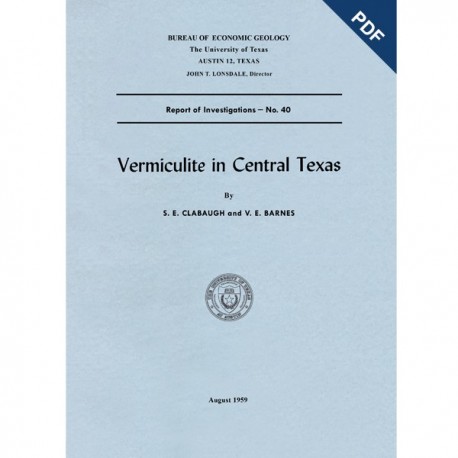
Vermiculite in Central Texas. Digital Download
RI0040D
A free, digital version of this publication can be found on: Texas ScholarWorks
To purchase a print version (if available): RI0040
RI0040D. Vermiculite in Central Texas, by S. E. Clabaugh and V. E. Barnes. 32 p., 6 figs., 1959. doi.org/10.23867/RI0040D. RI0040D - Downloadable PDF.
To purchase this publication in book format, please order RI0040.
ABSTRACT
Vermiculite deposits in the Central Mineral region of Texas, chiefly in Precambrian metamorphic rocks, are situated in Llano County and adjacent parts of Mason, Gillespie, and Burnet counties with minor occurrences in Blanco and San Saba counties. All of the known deposits contain a lesser percentage of vermiculite than the deposits now being exploited in South Carolina and Montana; however, the deposits are substantial in size and will probably be mined when the richer domestic and foreign sources are exhausted.
The bulk of the vermiculite is from weathering of biotite formed in the following suggested manner: (1) intrusion of sills and irregular masses of gabbro into the Valley Spring gneiss prior to or during regional metamorphism; (2) metamorphism of gabbro to produce amphibolite; and (3) partial conversion of amphibolite to biotite schist by metasomatism accompanying the emplacement of granites and pegmatites. In one deposit the process seems to have been arrested in the amphibolite stage with introduction of nonoriented biotite and feldspar by potash metasomatism.
A third distinct type of vermiculite deposit associated with serpentine and soapstone appears to be primary hydrothermal rather than a weathering product of biotite. Suggested events leading to the formation of this type of deposit are: (1) emplacement of dunite and gabbro in Valley Spring gneiss; (2) metamorphism of gabbro to form amphibolite with deformation of dunite into lenticular masses; (3) alteration of dunite to nonfoliated serpentine during static conditions and through the influence of aqueous solutions; (4) alteration of serpentine to soapstone from periphery inward through influence of fluids from nearby granite intrusions; and (5) formation of vermiculite veins along fractures in soapstone and serpentine through the influence of fluids from pegmatites which closely followed the granite intrusion.
Keywords: vermiculite, Central Mineral Region, Llano County, Mason County, Burnet County, Gillespie County, mineral resources, Texas

